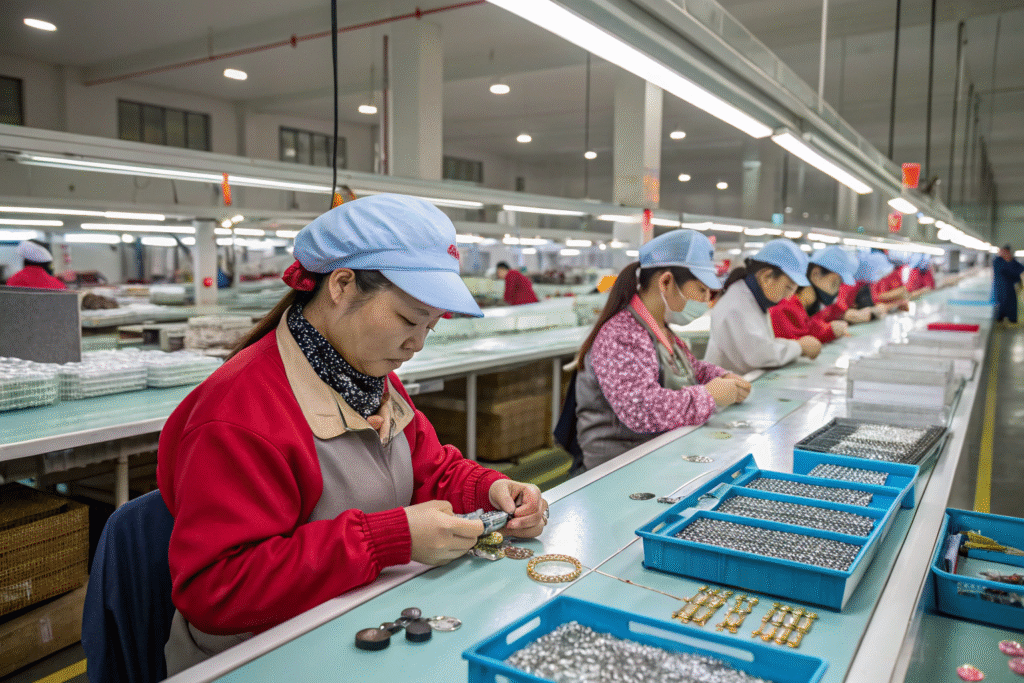As a factory owner, I understand the pain of seeing beautifully designed hair accessories rejected due to minor but costly defects. In today's fast-paced market—where online reviews can make or break a product—quality is everything. Buyers like Ron from the U.S. demand not only innovation but also consistency in every claw clip or pearl barrette they order. So how do we, as manufacturers, rise to that challenge?
To reduce defect rates below 0.5%, factories must implement a holistic quality management strategy—from design validation and raw material inspection to in-line QC and packaging safeguards. Every step matters, and even the smallest lapse can compromise the integrity of an entire order.
If you're tired of late deliveries due to rework or customer complaints from faulty headbands, this guide is for you. I’ll break down how we’ve achieved industry-leading defect control across thousands of SKUs, and how you can expect the same if you work with top-tier Chinese factories.
What Causes Most Hair Accessory Defects in Bulk Orders?
Common manufacturing defects in fashion hair accessories are often preventable if identified early. Let’s look at how small issues snowball into major customer complaints.
The most common causes of defects are poor raw material quality, inconsistent finishing, and rushed packaging. Each issue, while seemingly minor, can drastically reduce your brand’s credibility.
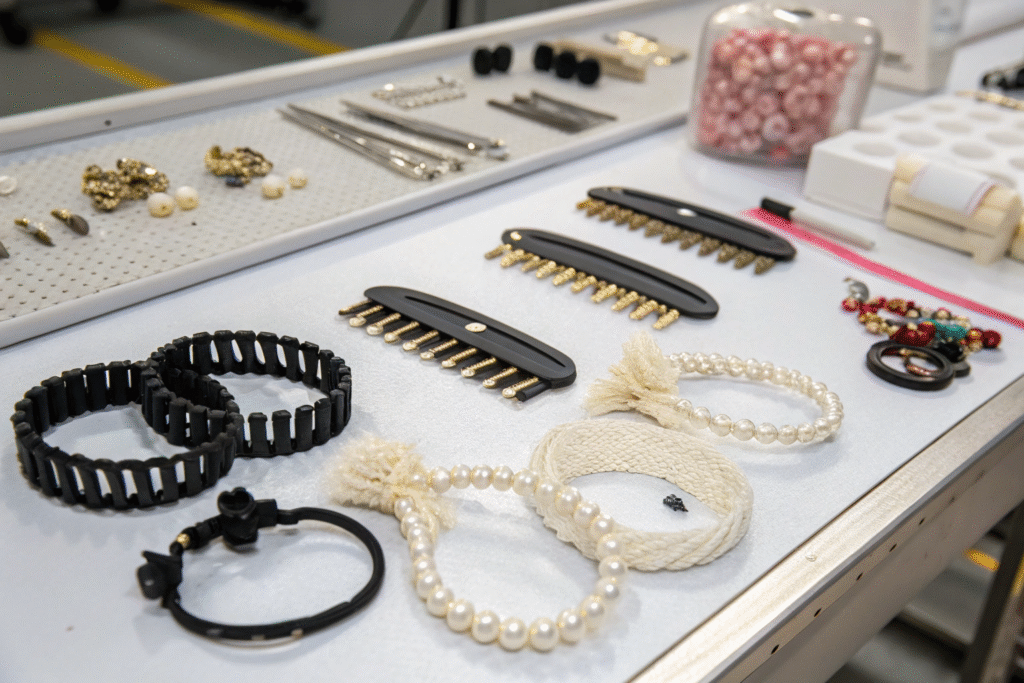
Are Raw Materials to Blame for Quality Issues?
Yes—low-grade plastics, elastic bands, or metal components lead to 70% of product rejections. Poor-quality coatings chip, and cheap elastic loses tension after a few wears. At HairAcc, we partner with specialized material suppliers in Yiwu who offer certified, high-grade inputs. We inspect every lot before production begins.
We’ve seen how poor plastic injection materials for claw clips cause micro-cracks during shipping. This is why we invest in stronger molds and test pre-production samples under stress.
How Do Manual Errors Affect Final QC?
Lack of trained workers is another silent defect multiplier. Misaligned bow clips, glue residue on rhinestones, or stitching issues on turban wraps usually occur when factories lack proper SOPs (Standard Operating Procedures). We address this with a three-shift training model and color-coded inspection charts.
We also use adjustable molds for barrette alignment and employ random cross-inspection during shift changes to catch human errors early.
What Factory Processes Can Reduce Defect Rates?
When you control the entire production chain, it’s easier to detect where things can go wrong. Top-tier manufacturers build quality into the process—not just at the end.
Proactive quality assurance, automated steps, and strict in-line checks are the most effective methods.
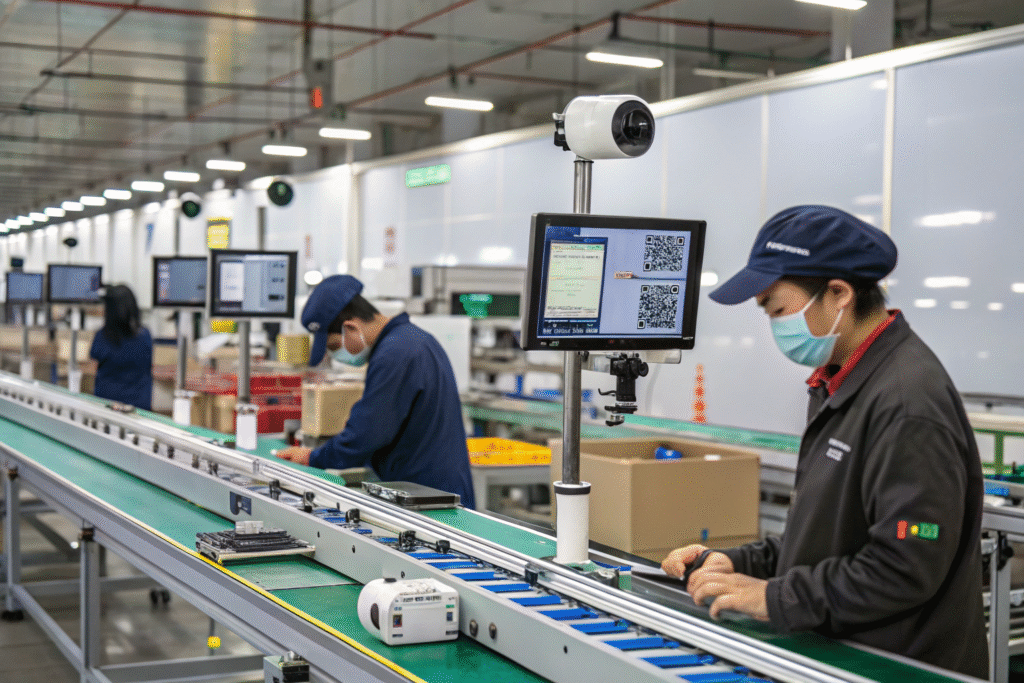
Can In-Line Quality Checks Stop Defects Earlier?
Absolutely. In-line QC helps identify issues before finishing and packaging. We’ve embedded quality gates at key stages: raw material prep, mold cooling, embellishment application, and final polish.
At HairAcc, we use UV light detectors for identifying glue excess on pearl pins. Our staff conducts AQL-based inspections for every 300 units in-line, not just at the end.
What Role Does Automation Play in Reducing Defects?
Semi-automation improves repeatability and minimizes human inconsistency. For instance, we use programmable cutting machines for headwrap fabric to ensure symmetry. Also, our bobby pin painting line uses robotic sprayers to avoid coating bubbles or uneven gloss.
By automating repetitive steps, we reduce subjective errors and boost speed without sacrificing quality.
How Important Is Pre-Shipment Inspection for Low Defect Rates?
Many factories fail at the last mile. Even perfect products can get damaged or mislabeled during packing. That’s why pre-shipment checks are crucial.
A robust final inspection process filters out any leftover defects and confirms compliance with buyer specs.
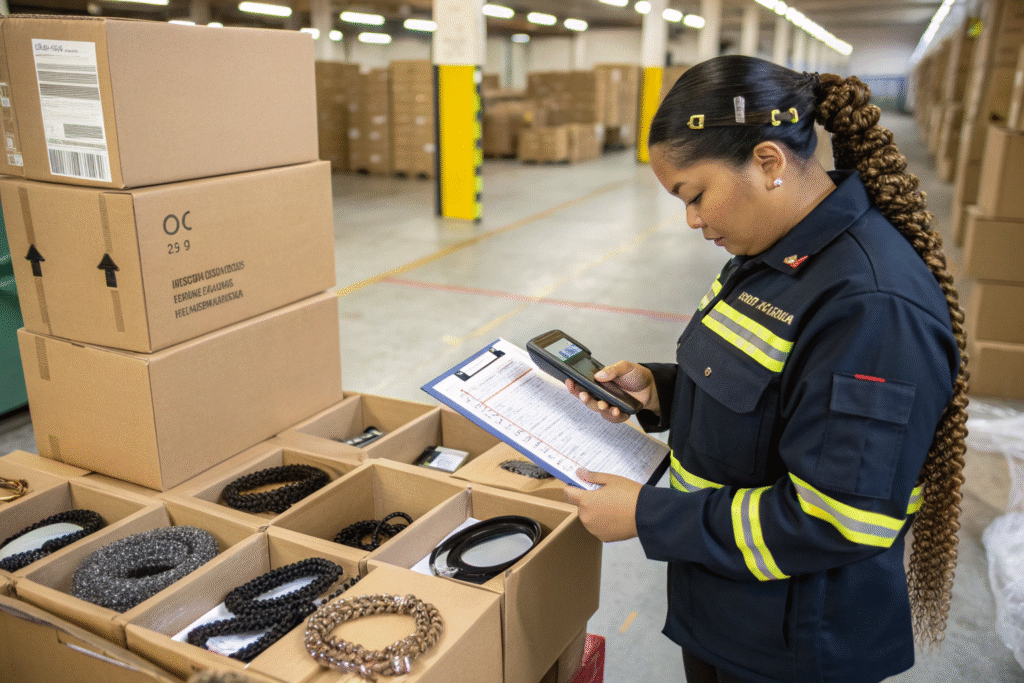
What Gets Checked During Final QC?
At HairAcc, we verify size, weight, material match, and barcode scan accuracy for every batch. Our team uses drop tests on claw clip boxes and friction tests for velvet headbands.
We ensure all hangtags and private-label packaging meet retailer compliance standards, especially for clients in the US and EU.
How Does Final QC Prevent Shipping Damage?
We use moisture-proof OPP bags, corner-protected cartons, and desiccants for ocean shipping. For delicate items like lace veils, we include foam wraps and “Fragile” labeling per international INCOTERM 2020 recommendations.
We’ve seen a 60% reduction in post-shipping returns since improving packaging materials and inspection protocols.
What Training & SOPs Should Factories Adopt?
Behind every low-defect factory is a team that knows exactly what “acceptable quality” looks like. Training is the heartbeat of sustainable quality.
By standardizing SOPs and investing in team education, factories can sustain sub-0.5% defect rates consistently.
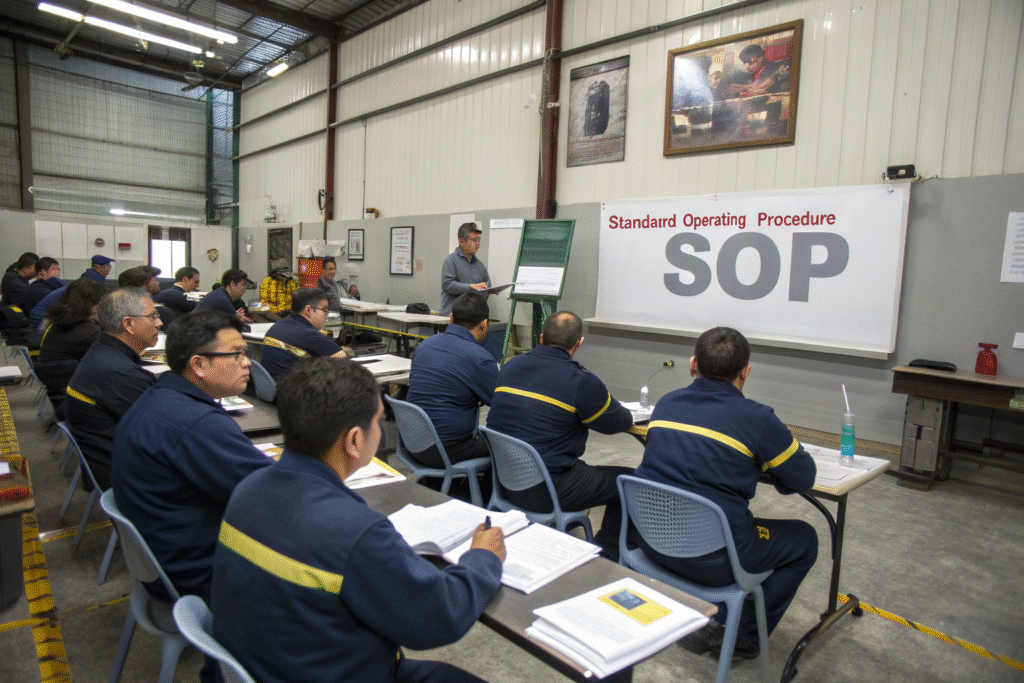
How Can SOPs Improve Consistency?
Standard Operating Procedures (SOPs) eliminate ambiguity. For example, our “Headband QC SOP” defines acceptable stitching variance (±1mm), color tolerance by Pantone shade, and packaging fold lines.
All workers are evaluated monthly on SOP adherence. We share bilingual guides and illustrated manuals similar to ISO 2859 sampling to improve understanding.
What Kind of Employee Training Yields Best Results?
We use a tiered approach—basic onboarding, intermediate defect diagnosis, and advanced process mapping. Monthly workshops include defect comparison games and real-time QC simulations.
Top-performing workers get quality bonuses and special certification badges displayed on their uniforms. This fosters pride and attention to detail across shifts.
Conclusion
Lowering defect rates below 0.5% in hair accessory production isn't just a dream—it’s a benchmark we’ve already achieved at HairAcc through SOP-based workflows, in-line QC, strategic automation, and pre-shipment rigor. Every headband, barrette, and scarf that leaves our factory passes through multiple layers of quality guardianship.
If you're serious about working with a supplier that doesn't cut corners, let's connect. At HairAcc, we bring decades of know-how and a strict quality mindset to every project. Whether you're scaling up an online boutique or supplying a major retailer, we’ll help you build a reliable, defect-free line of fashion accessories.
Contact our Business Director Elaine at elaine@fumaoclothing.com to start your production with confidence. We welcome you to request free samples and QC reports.

